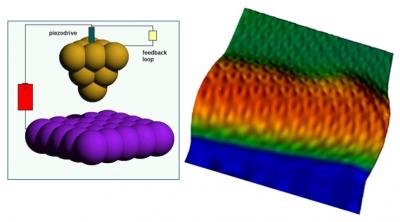
- Image via Wikipedia
Nothing Eileen Oldaker tried could calm her mother when she called from the nursing home, disoriented and distressed in what was likely the early stages of dementia. So Ms. Oldaker hung up, dialed the nurses’ station and begged them to get Paro.
Paro is a robot modeled after a baby harp seal. It trills and paddles when petted, blinks when the lights go up, opens its eyes at loud noises and yelps when handled roughly or held upside down. Two microprocessors under its artificial white fur adjust its behavior based on information from dozens of hidden sensors that monitor sound, light, temperature and touch. It perks up at the sound of its name, praise and, over time, the words it hears frequently.
“Oh, there’s my baby,” Ms. Oldaker’s mother, Millie Lesek, exclaimed that night last winter when a staff member delivered the seal to her. “Here, Paro, come to me.”
“Meeaakk,” it replied, blinking up at her through long lashes.
Janet Walters, the staff member at Vincentian Home in Pittsburgh who recalled the incident, said she asked Mrs. Lesek if she would watch Paro for a little while.
“I need someone to baby-sit,” she told her.
“Don’t rush,” Mrs. Lesek instructed, stroking Paro’s antiseptic coat in a motion that elicited a wriggle of apparent delight. “He can stay the night with me.”
After years of effort to coax empathy from circuitry, devices designed to soothe, support and keep us company are venturing out of the laboratory. Paro, its name derived from the first sounds of the words “personal robot,” is one of a handful that take forms that are often odd, still primitive and yet, for at least some early users, strangely compelling.
For recovering addicts, doctors at the University of Massachusetts are testing a wearable sensor designed to discern drug cravings and send text messages with just the right blend of tough love.
For those with a hankering for a custom-built companion and $125,000 to spend, a talking robotic head can be modeled on the personality of your choice. It will smile at its own jokes and recognize familiar faces.
For dieters, a 15-inch robot with a touch-screen belly, big eyes and a female voice sits on the kitchen counter and offers encouragement after calculating their calories and exercise.
“Would you come back tomorrow to talk?” the robot coach asks hopefully at the end of each session. “It’s good if we can discuss your progress every day.”
Robots guided by some form of artificial intelligence now explore outer space, drop bombs, perform surgery and play soccer. Computers running artificial intelligence software handle customer service calls and beat humans at chess and, maybe, “Jeopardy!”
Related articles by Zemanta
- NYT: Robot companions fill human void (msnbc.msn.com)
- Randomness: Now Robotically Controlled (omnipotentpoobah.com)
- Fujitsu develops robotic care bear that giggles, snores (crunchgear.com)









